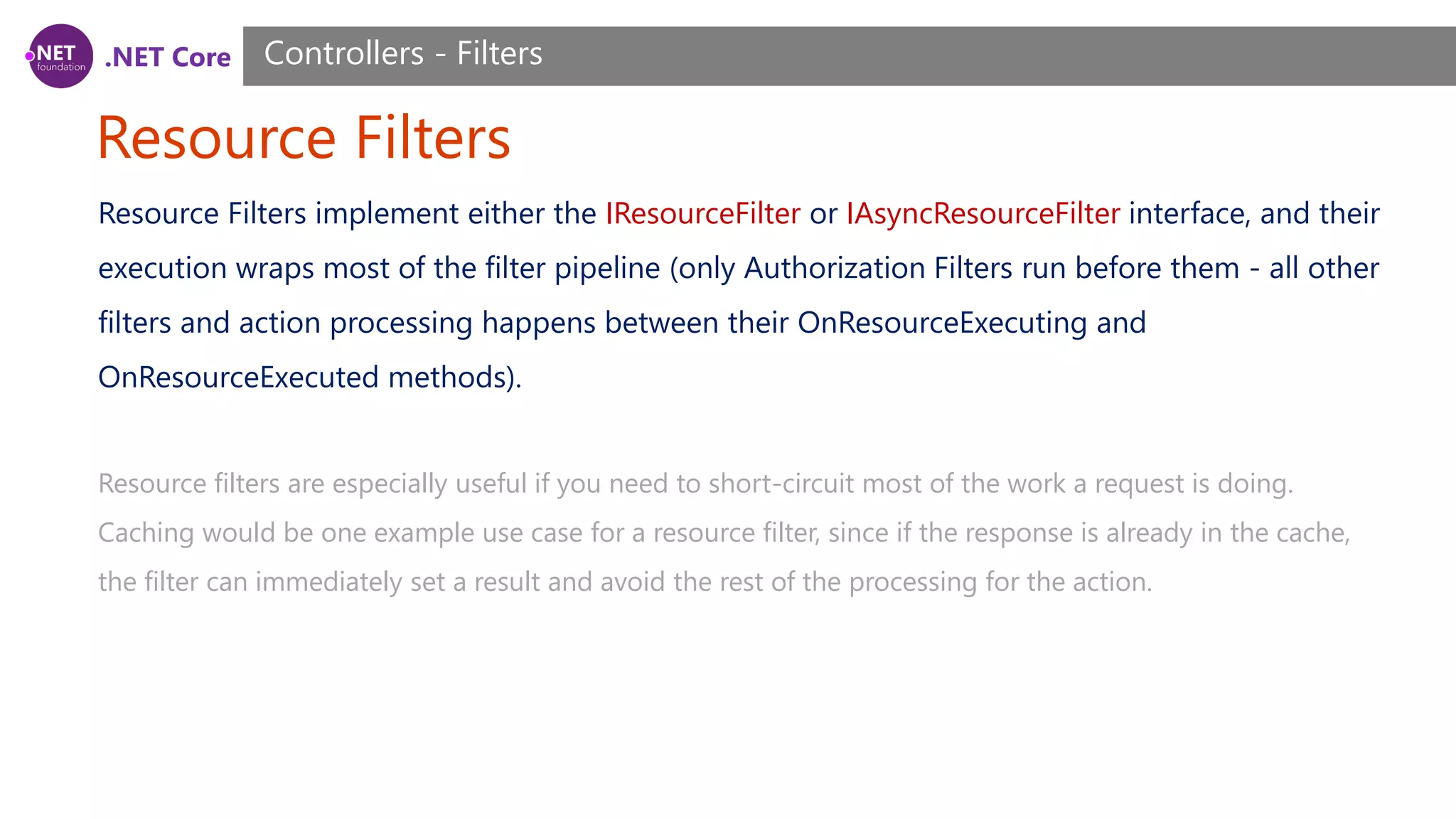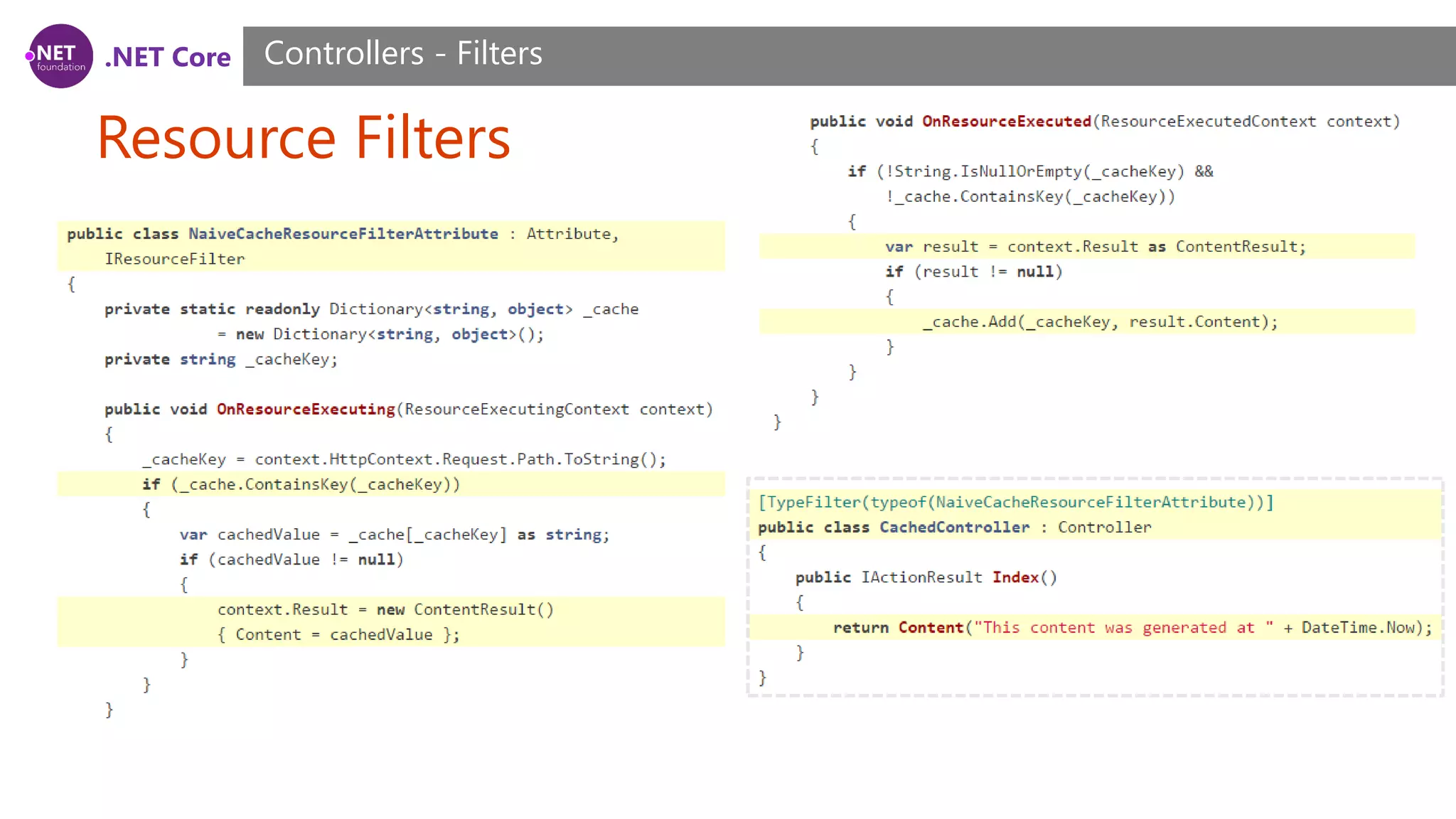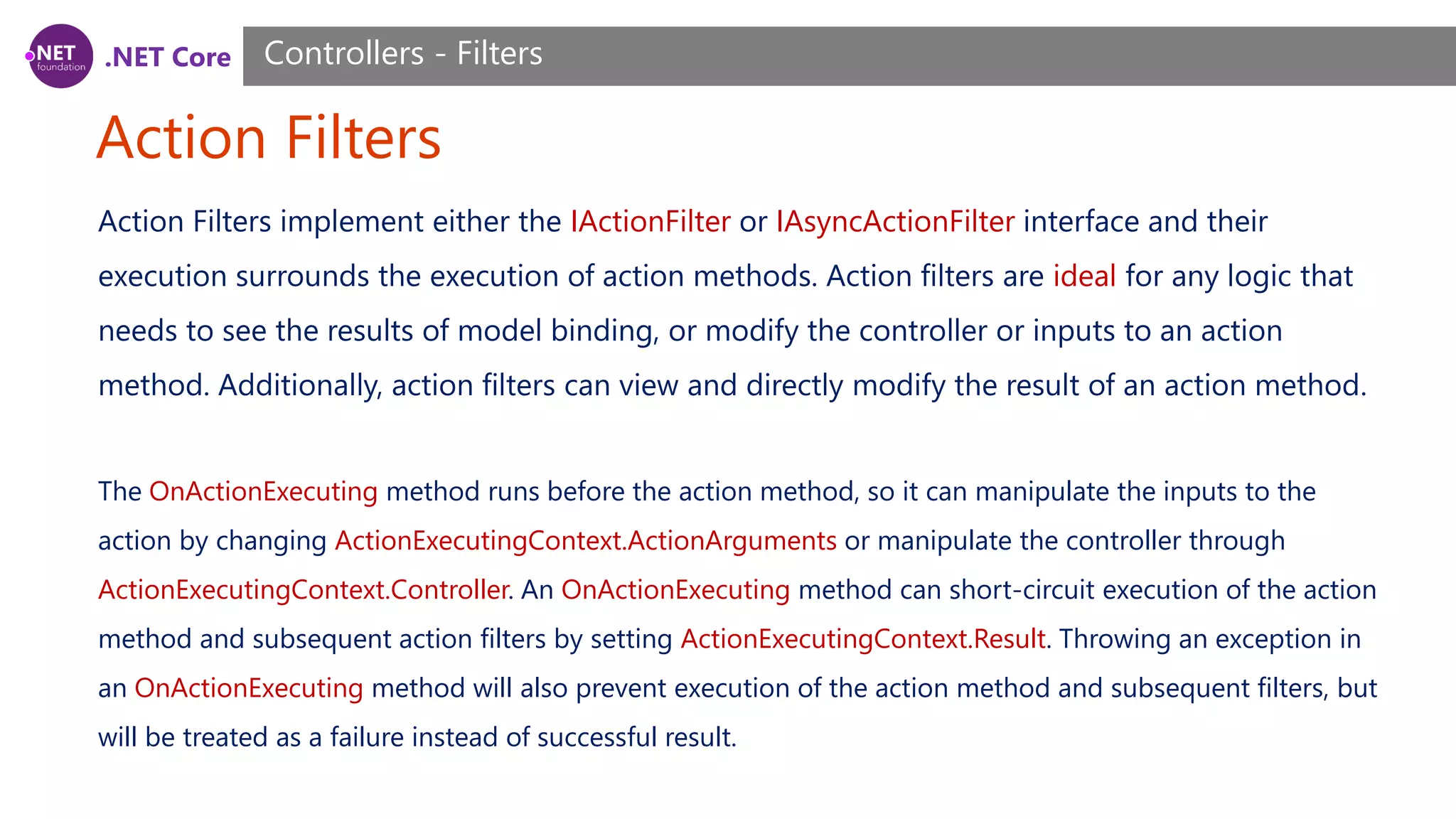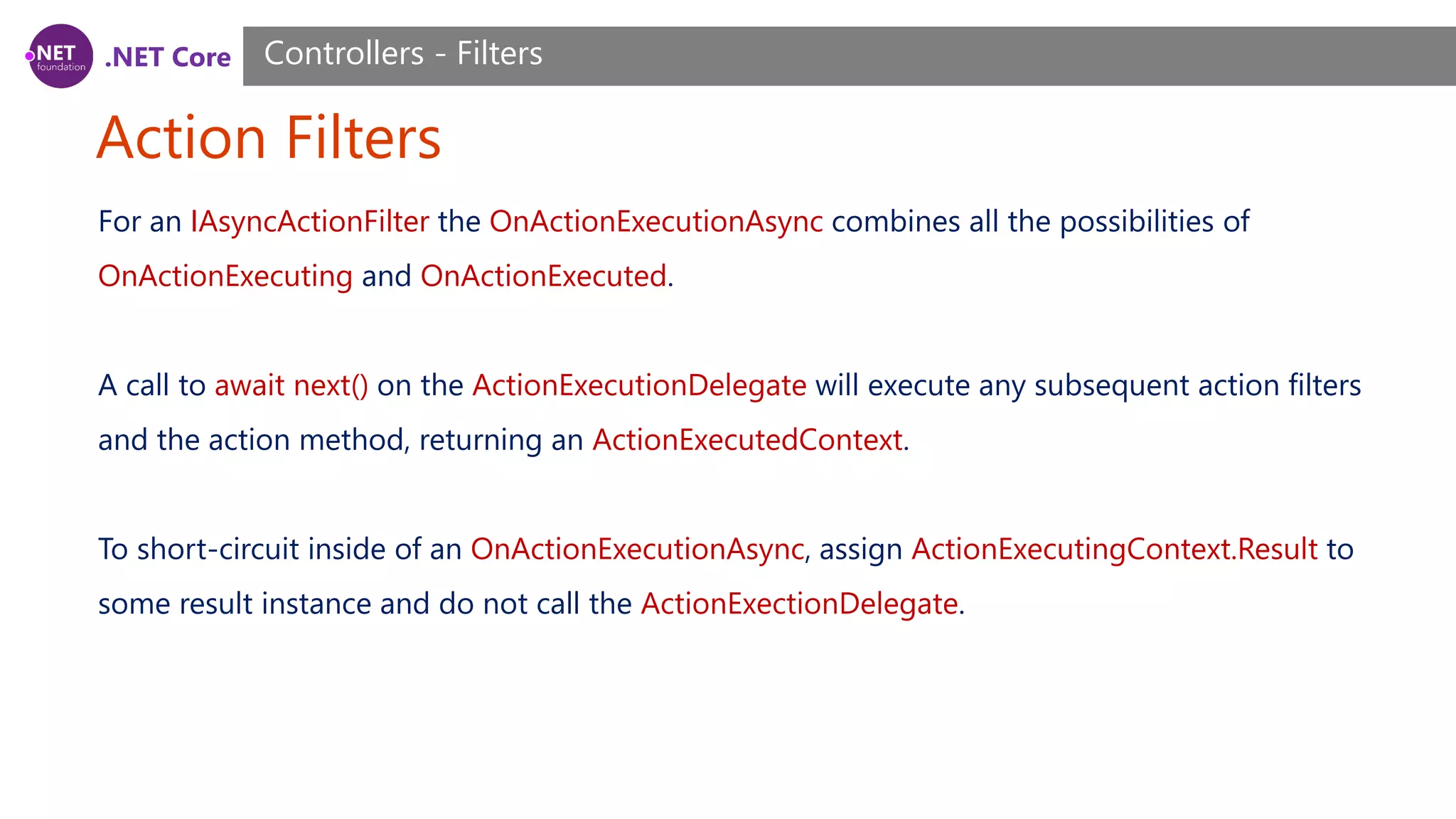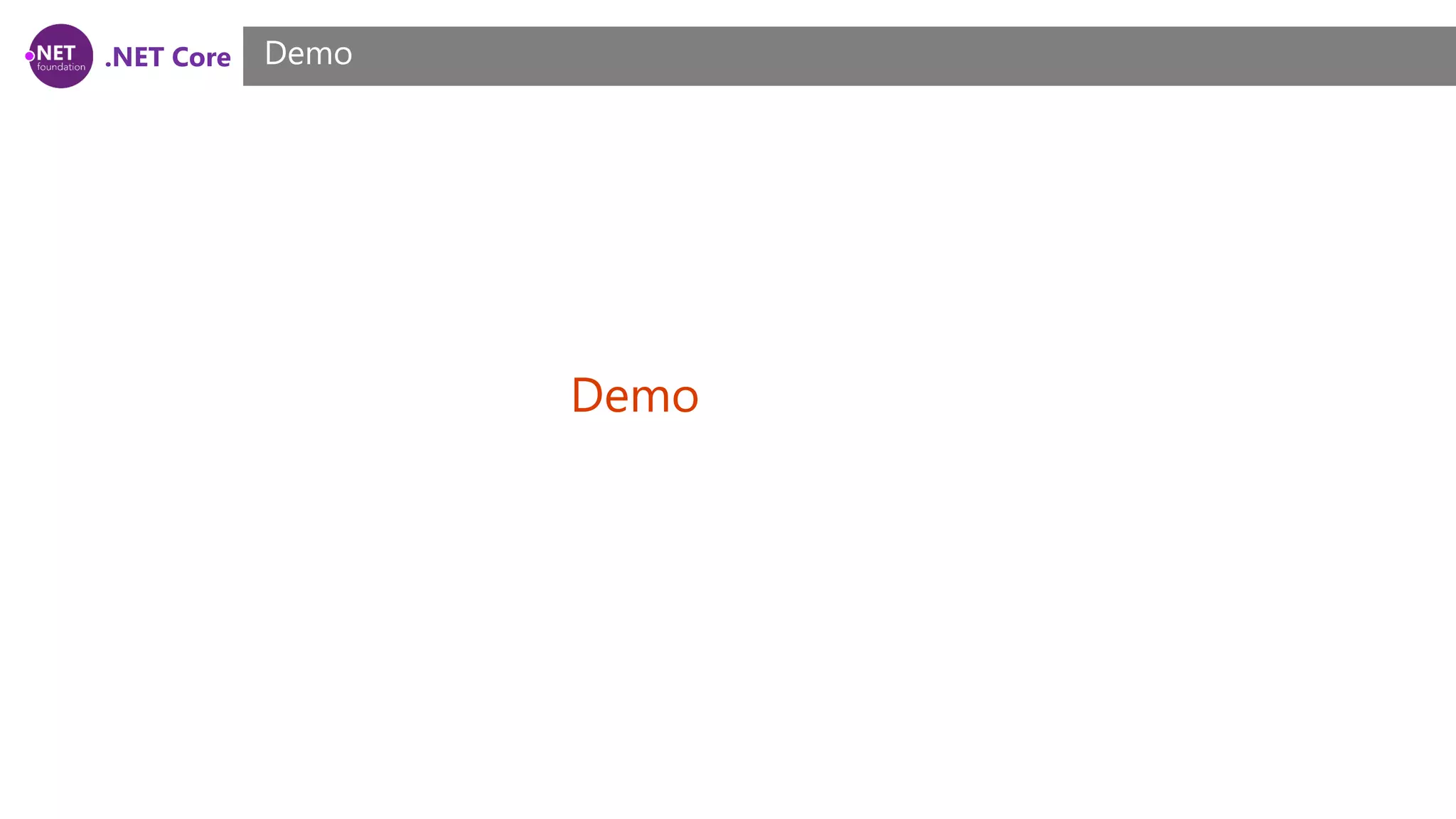This document provides an overview of controllers and filters in ASP.NET Core MVC. It defines controllers as classes that handle browser requests, retrieve model data, and specify view templates. Actions are public methods on controllers that handle requests. Filters allow running code before and after stages of the execution pipeline and can be used to handle concerns like authorization, caching, and exception handling. The document discusses implementing different filter types, configuring filters through attributes and dependency injection, and controlling filter order.
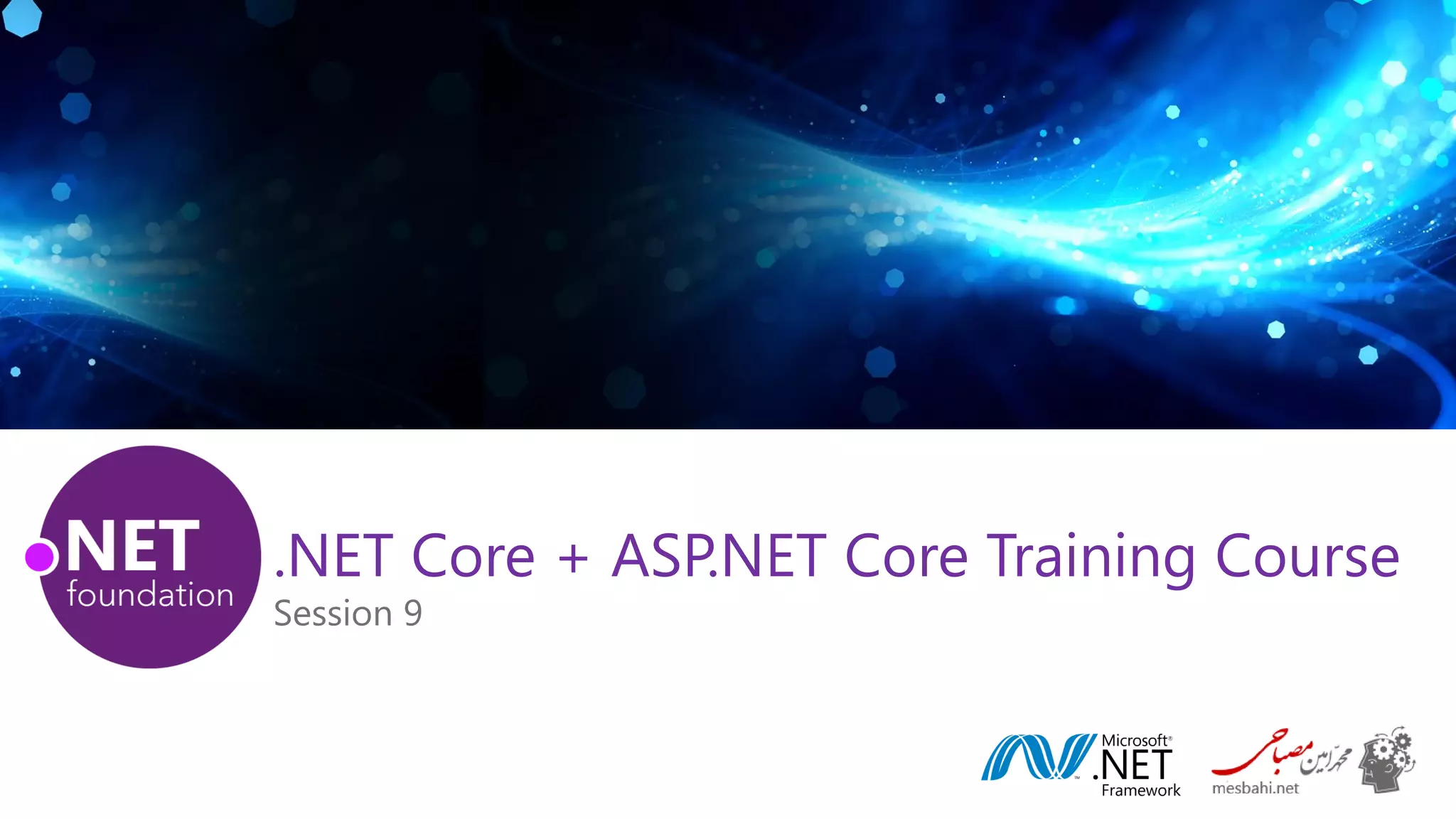

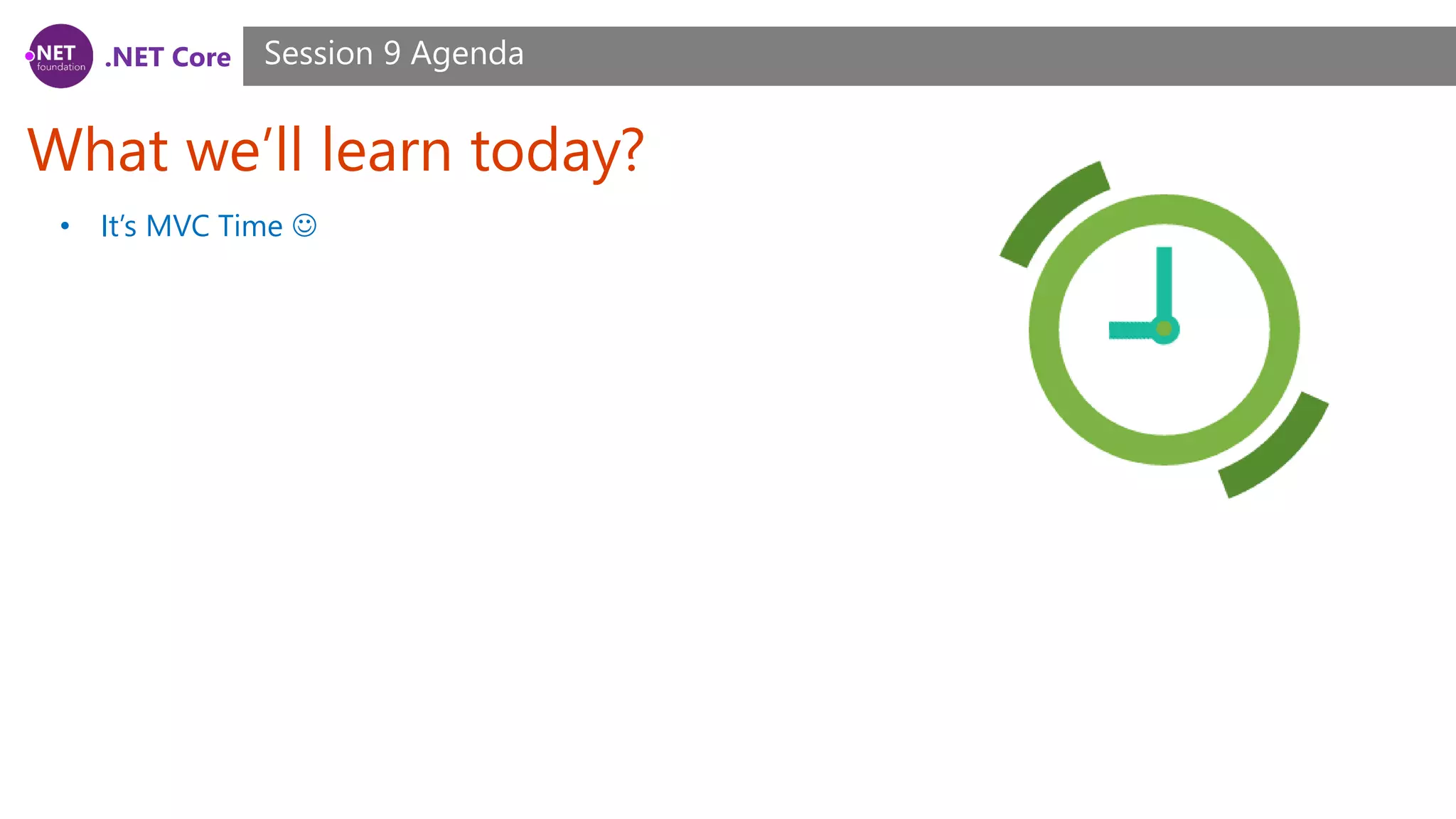
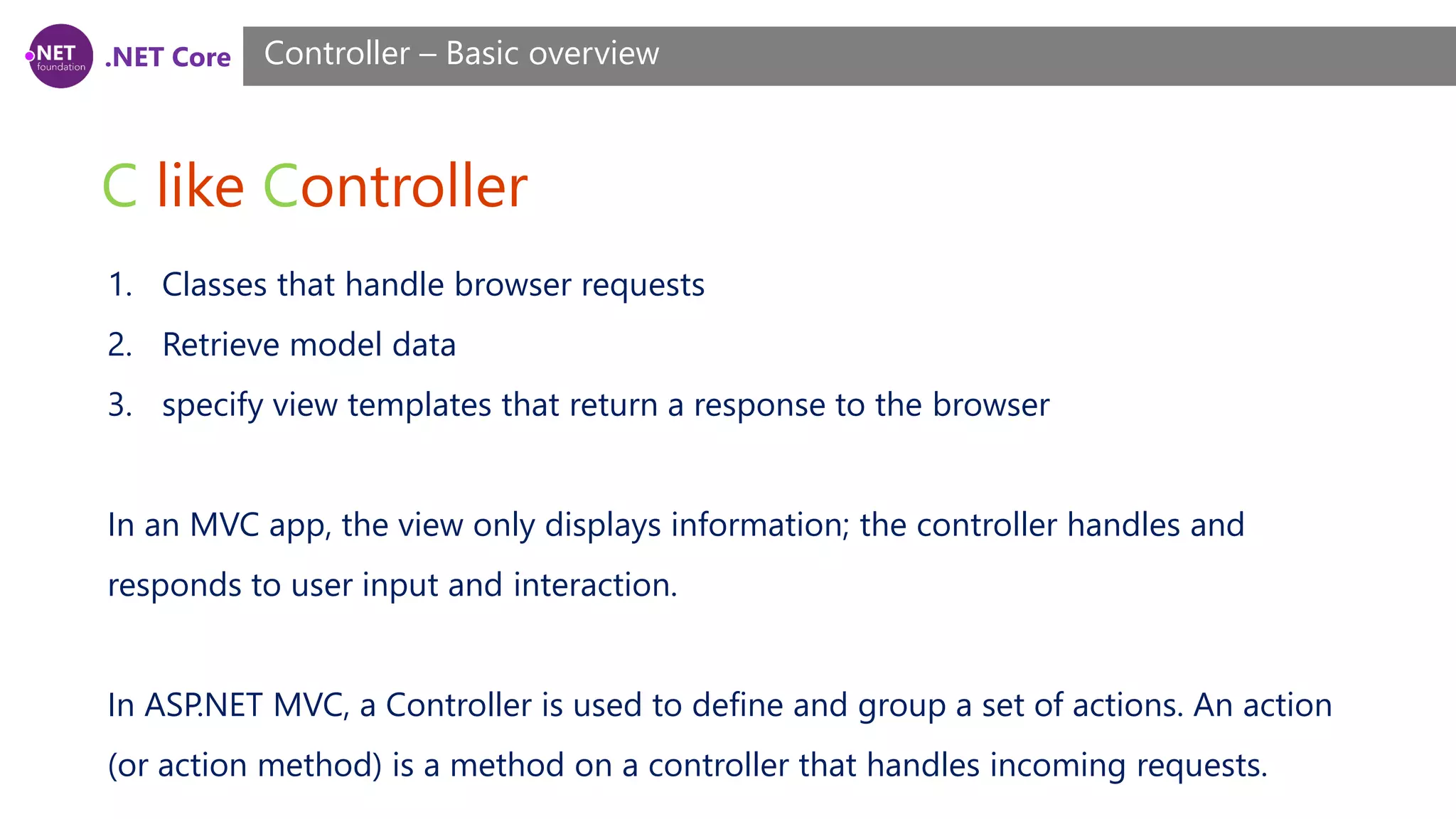
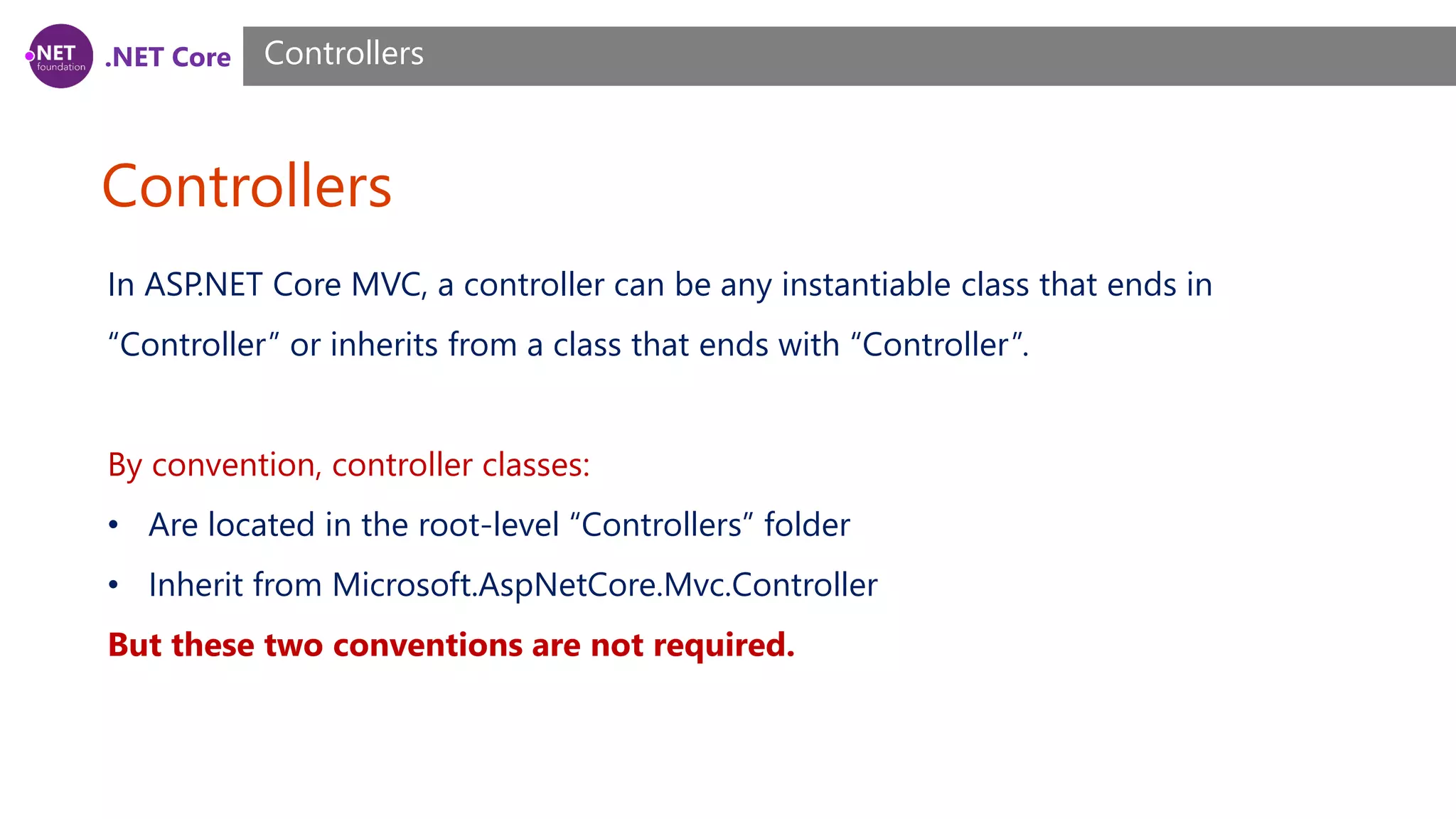
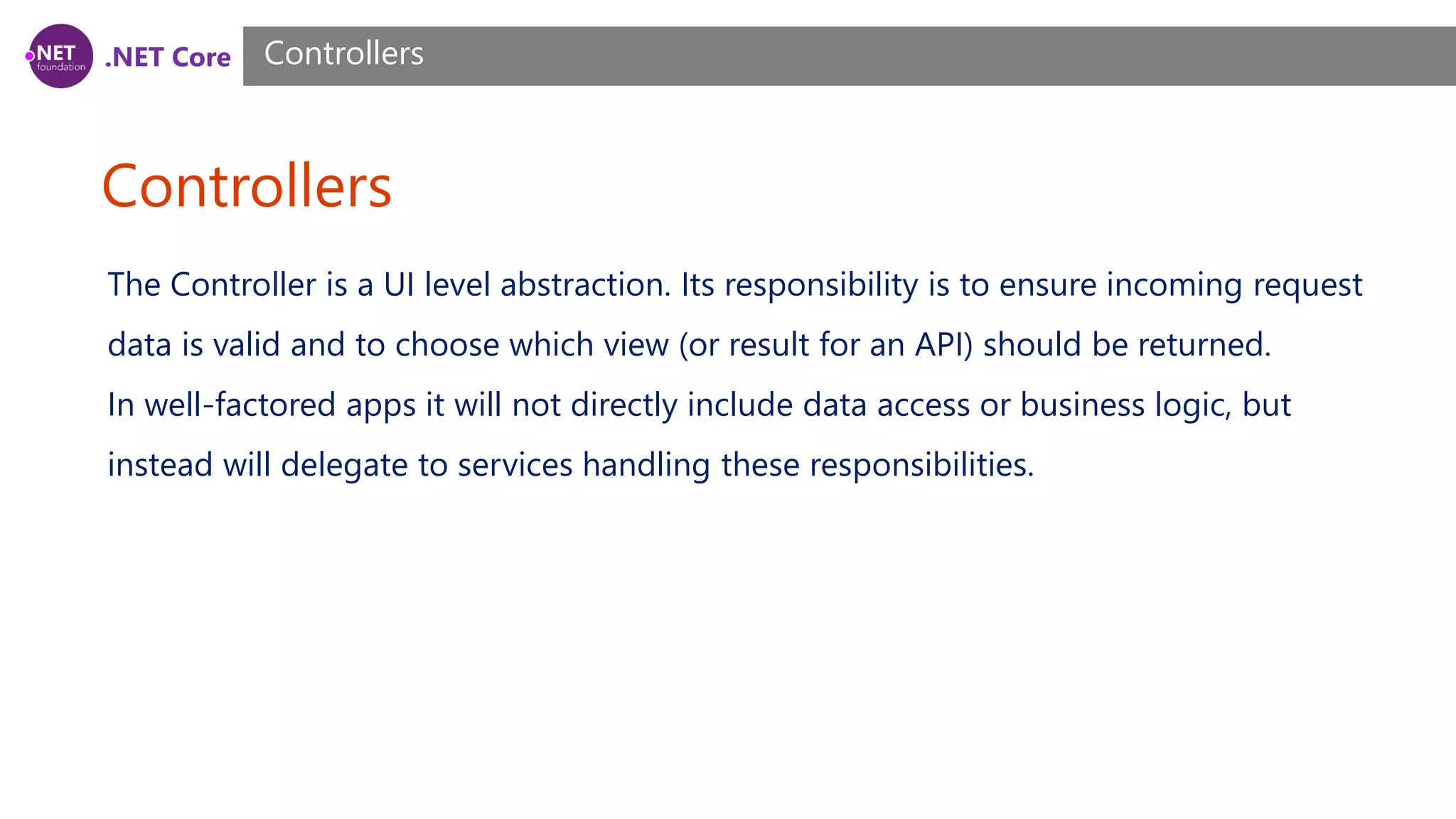

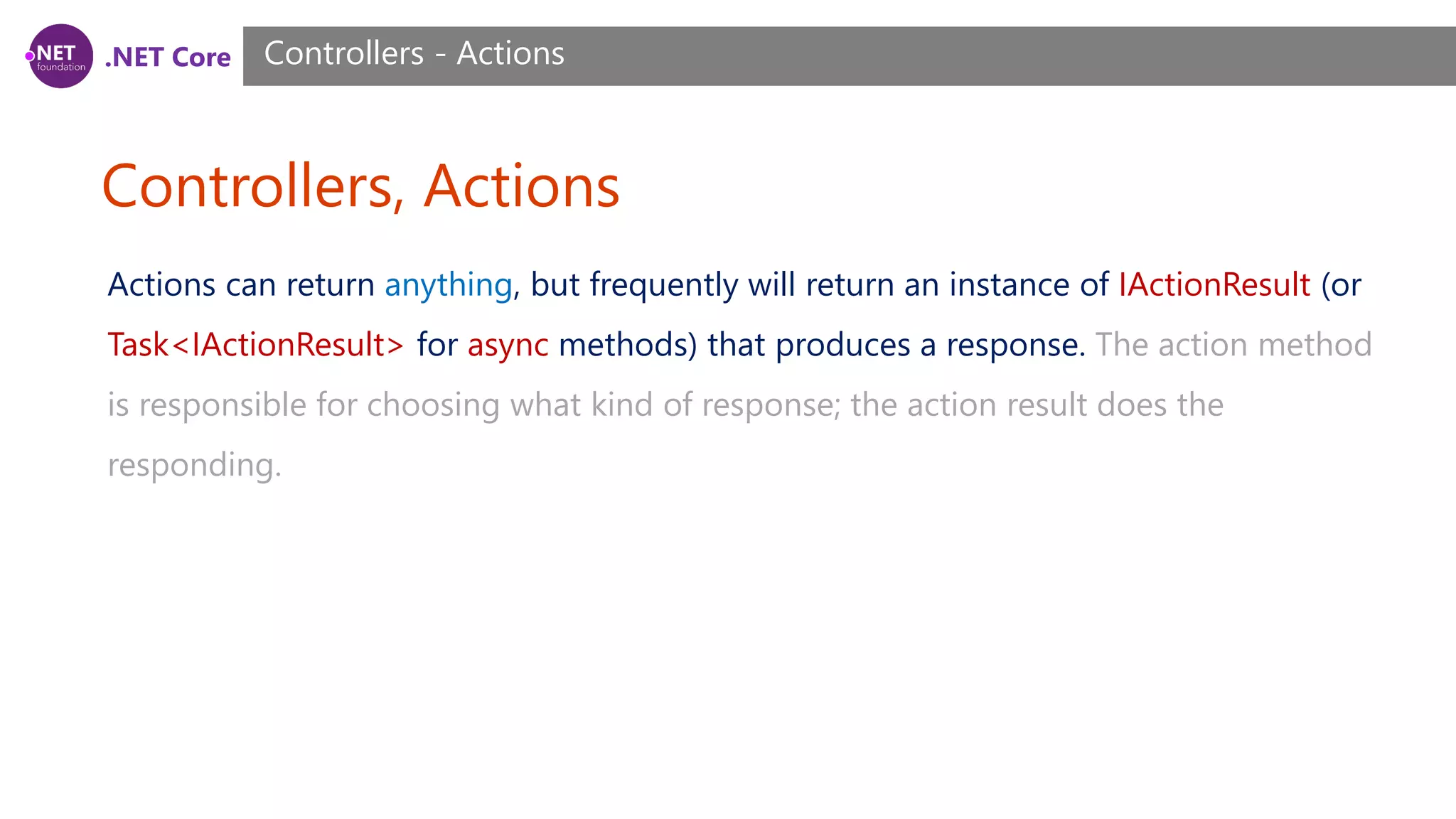

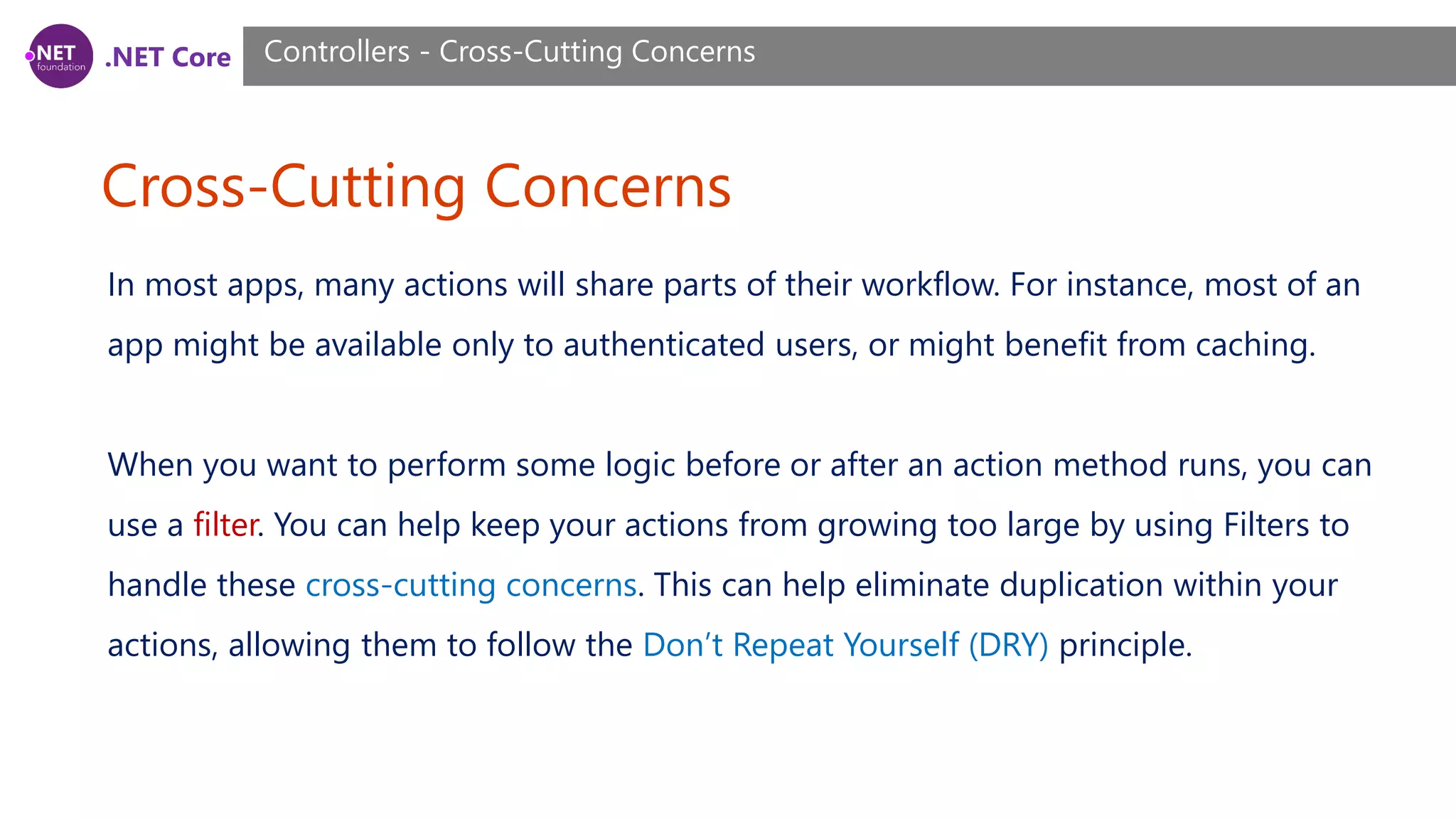
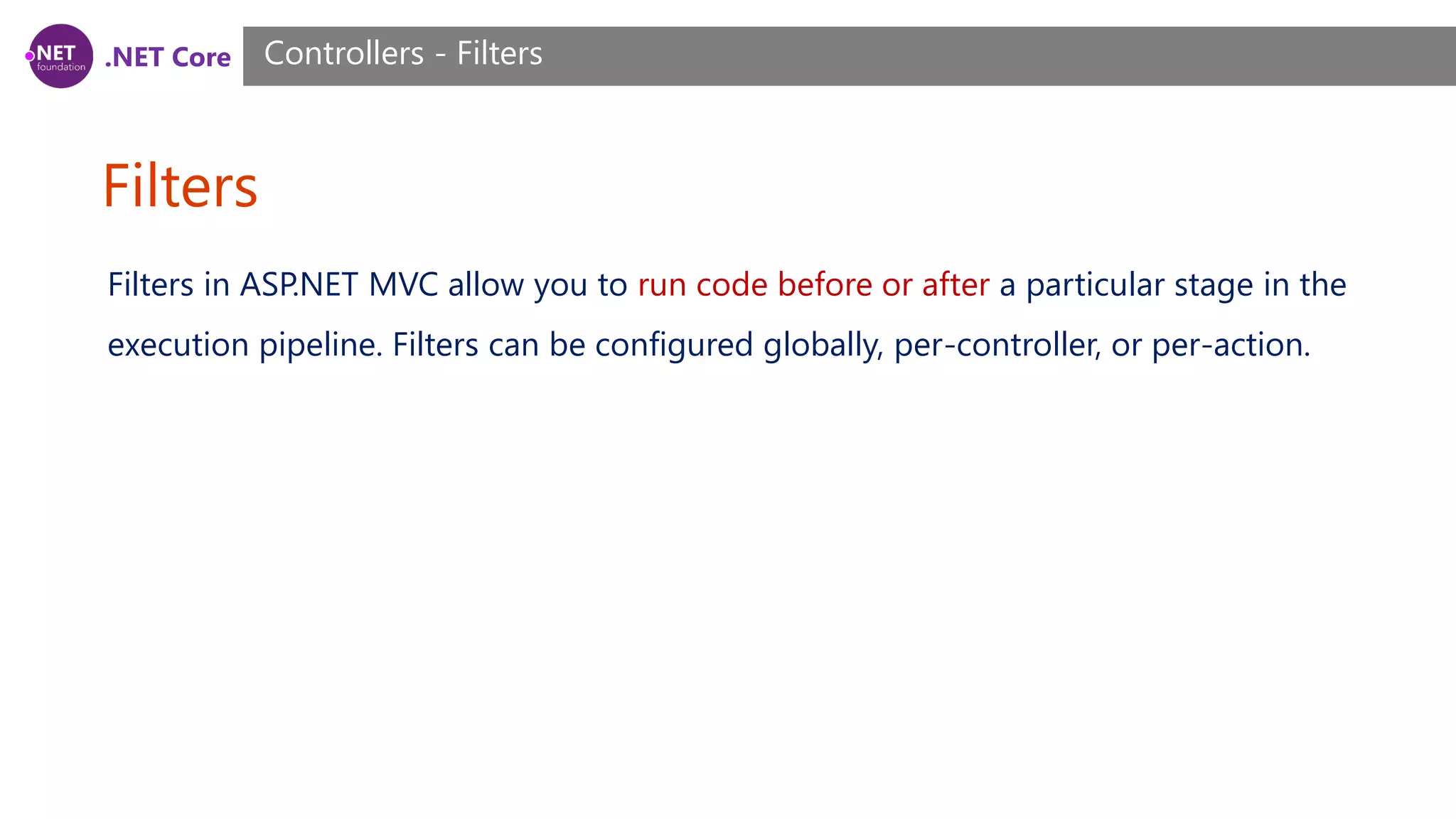
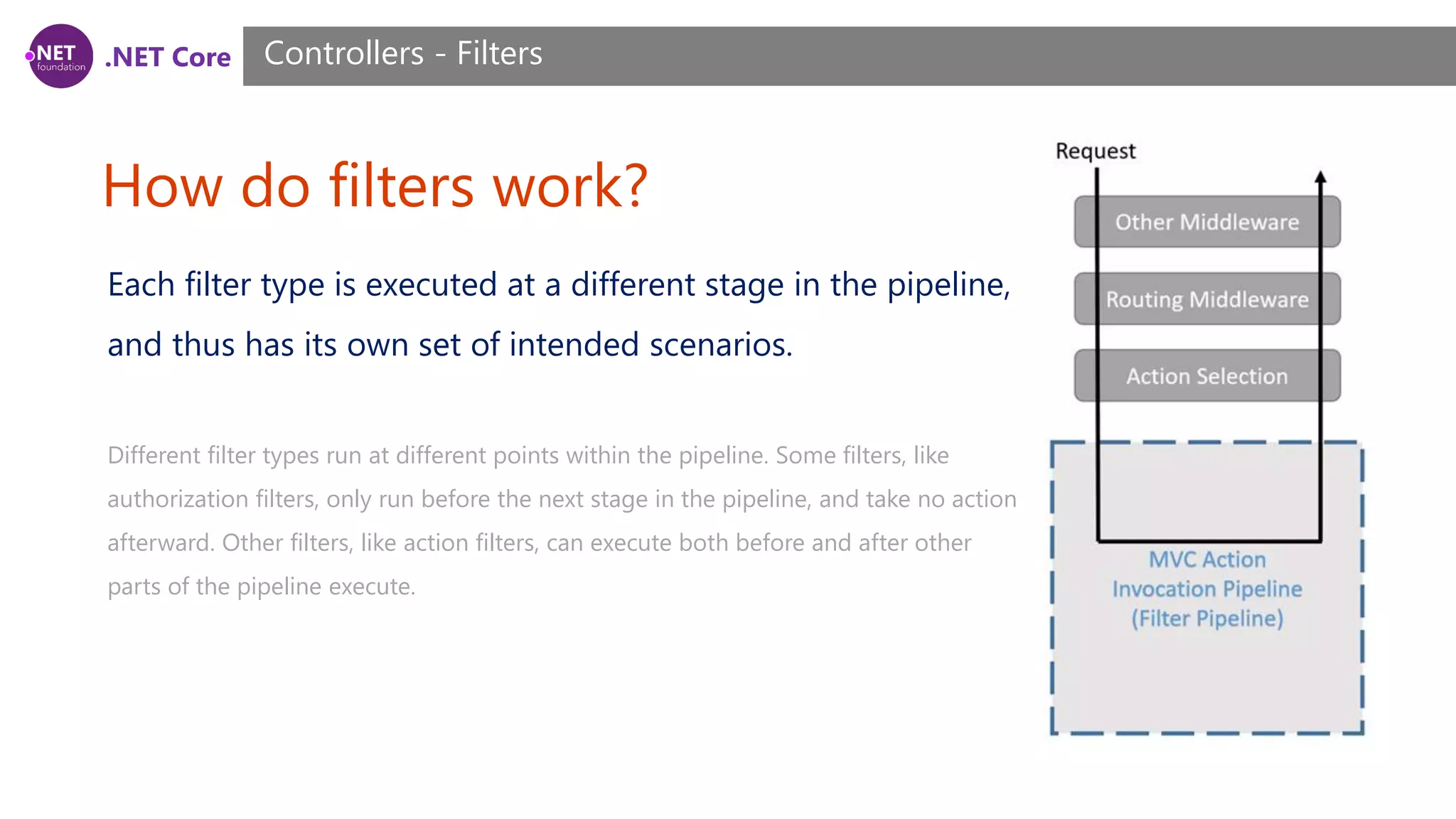
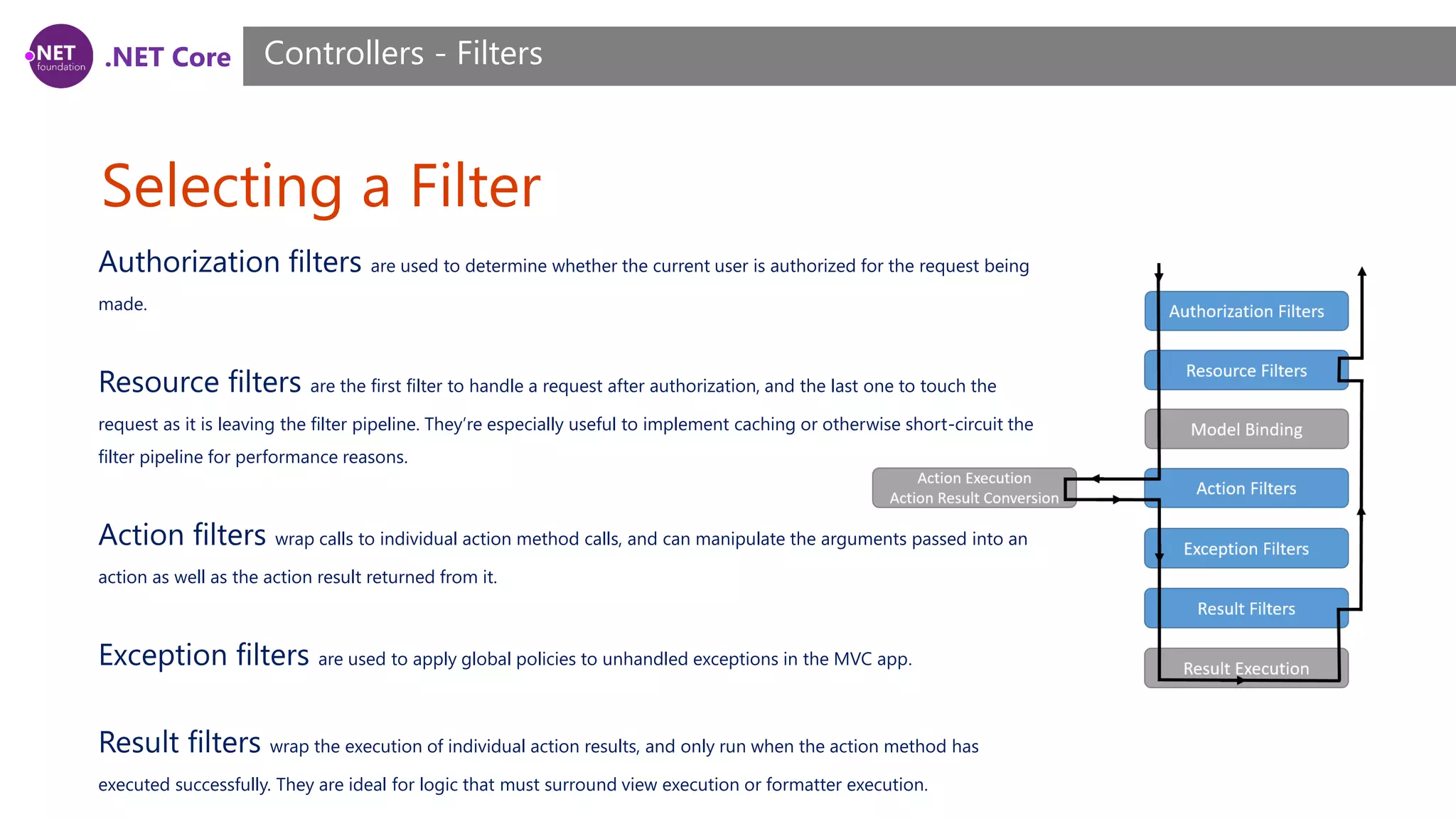

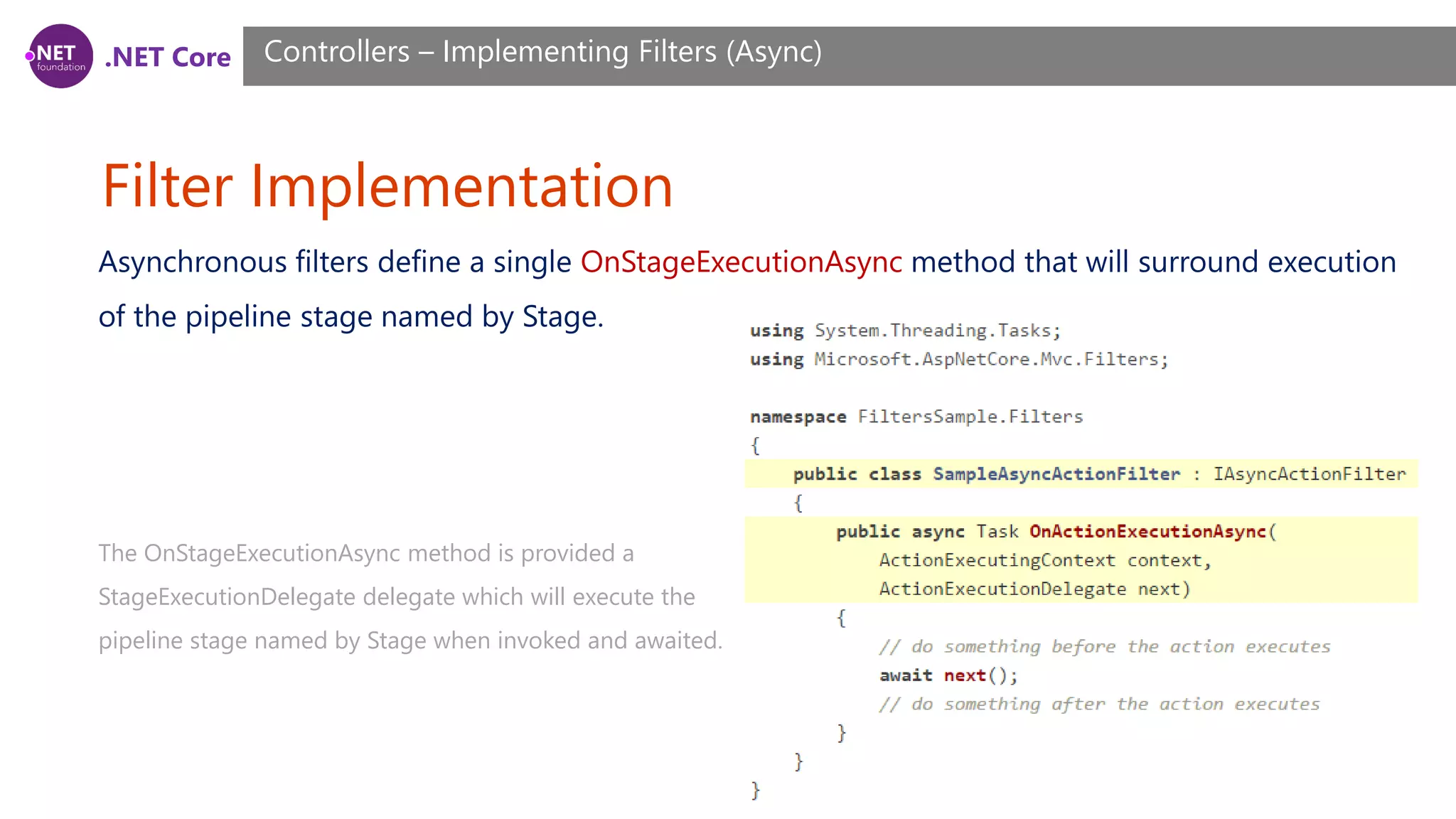


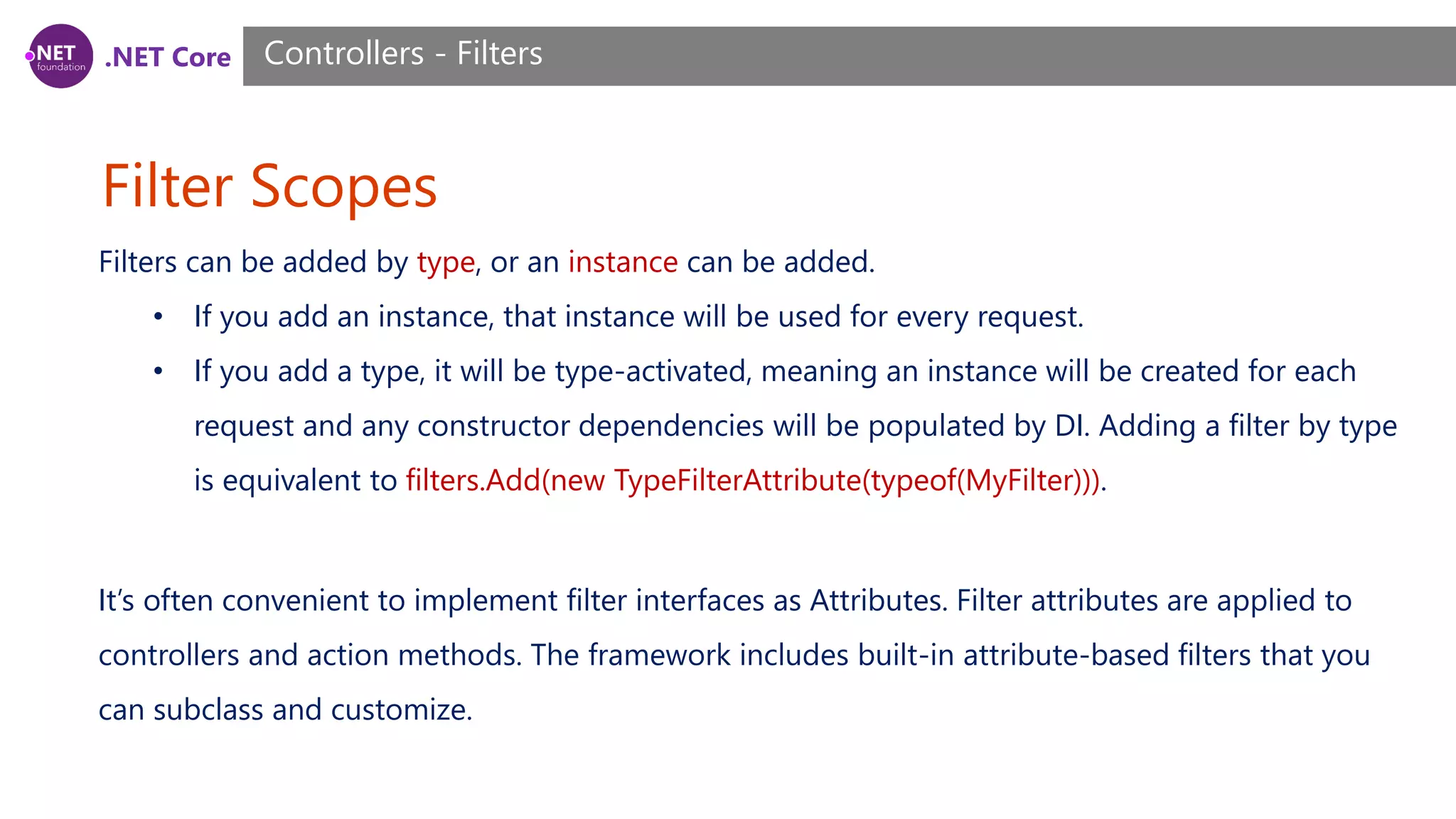
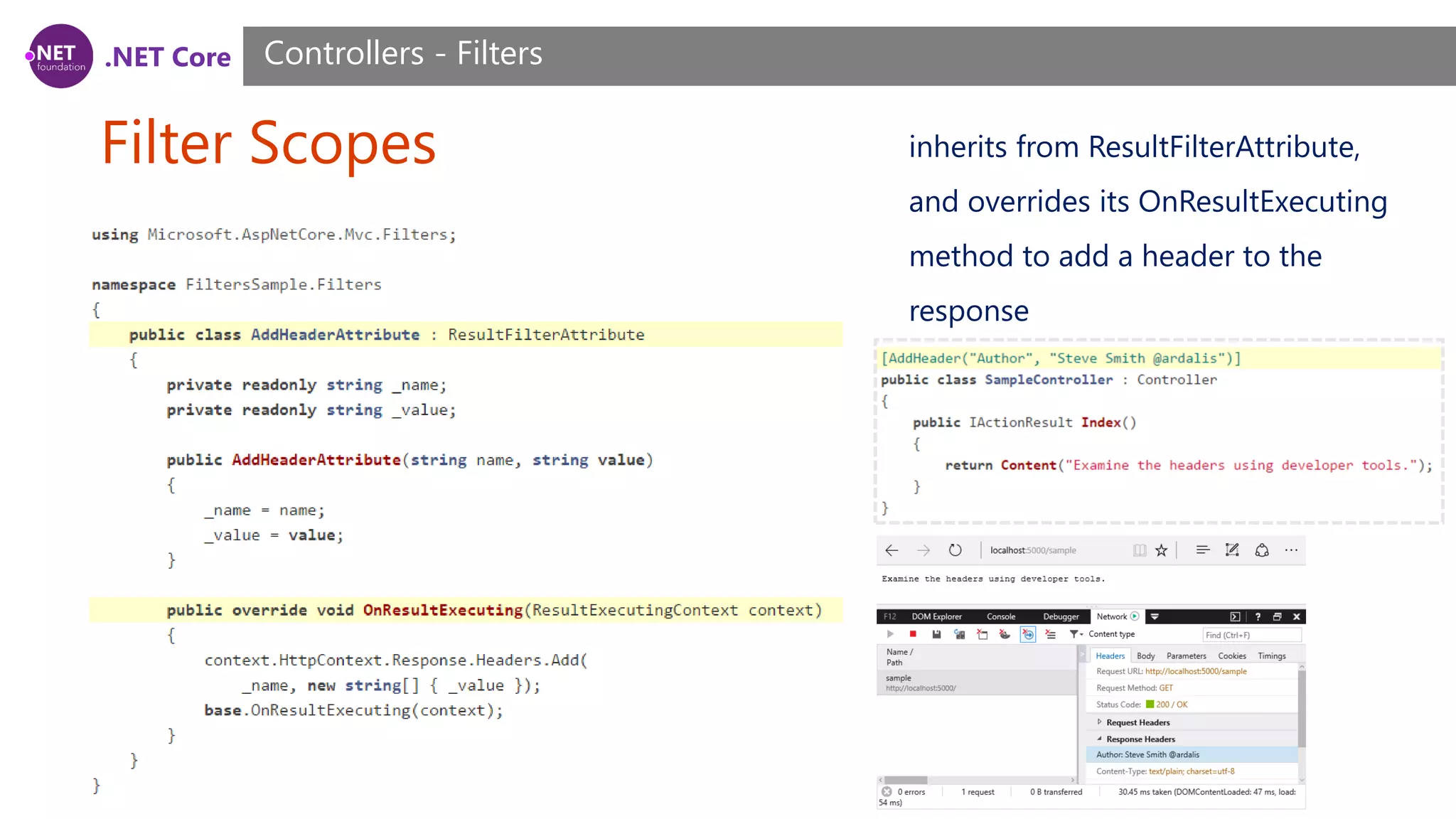
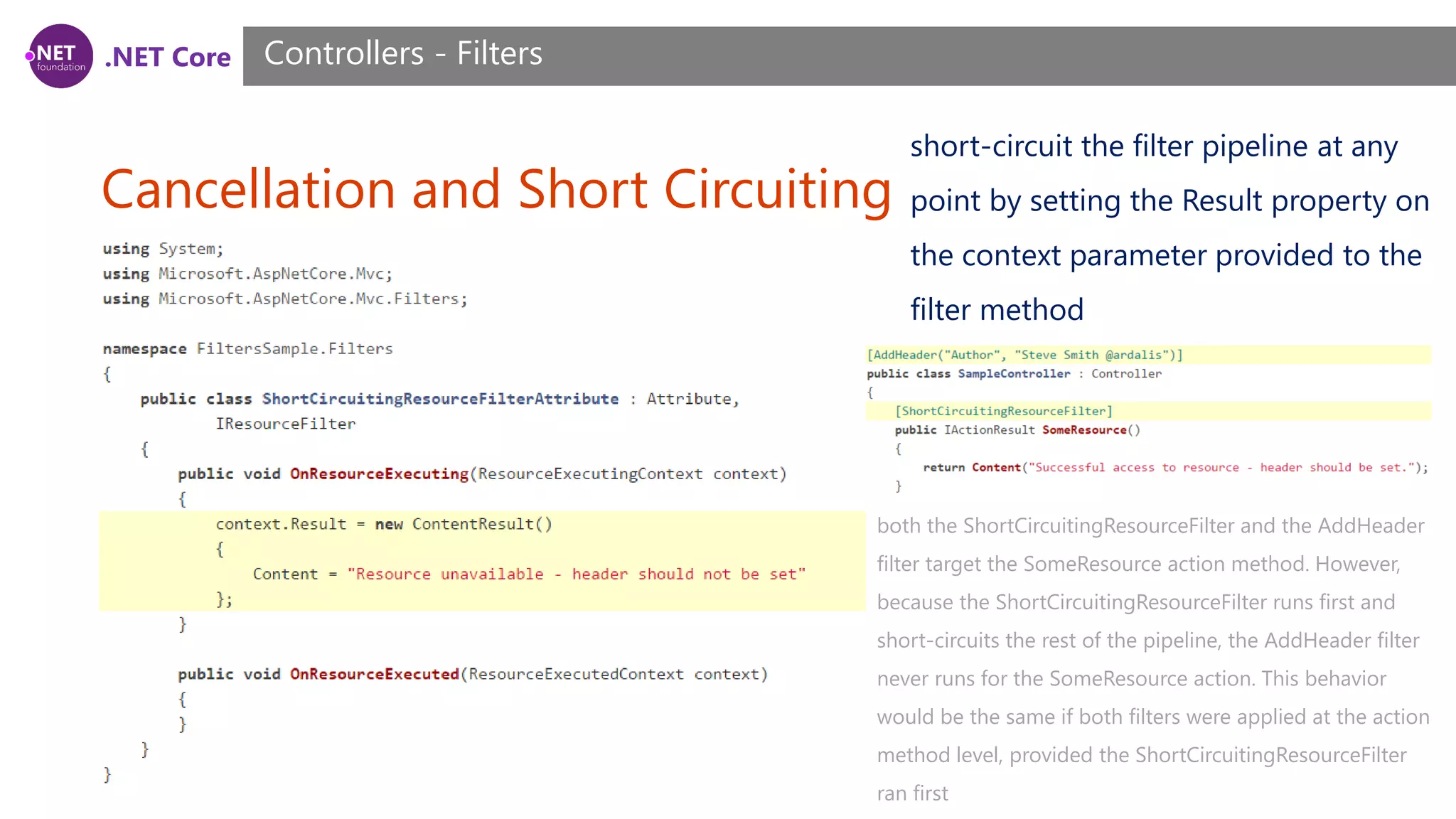

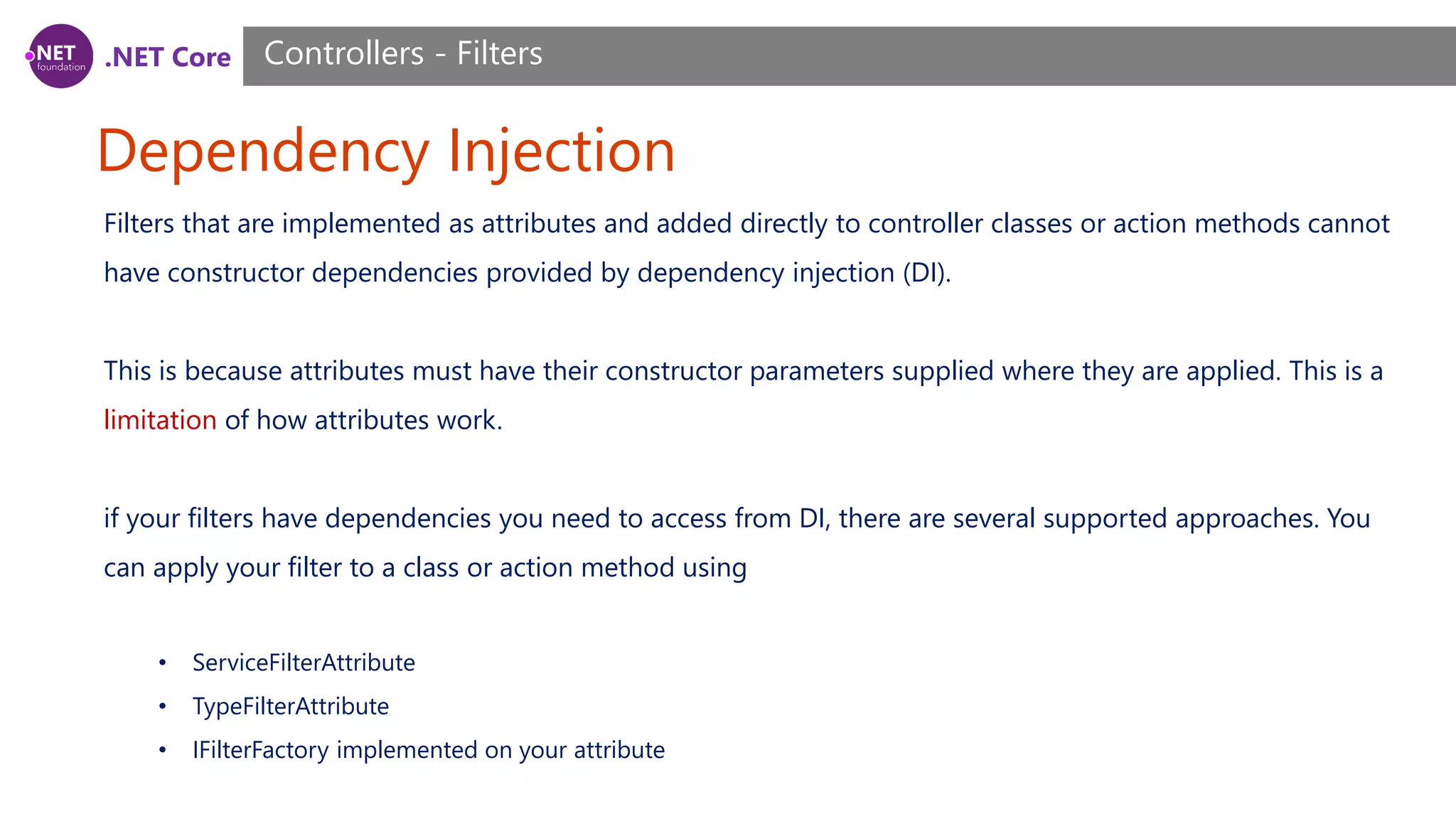
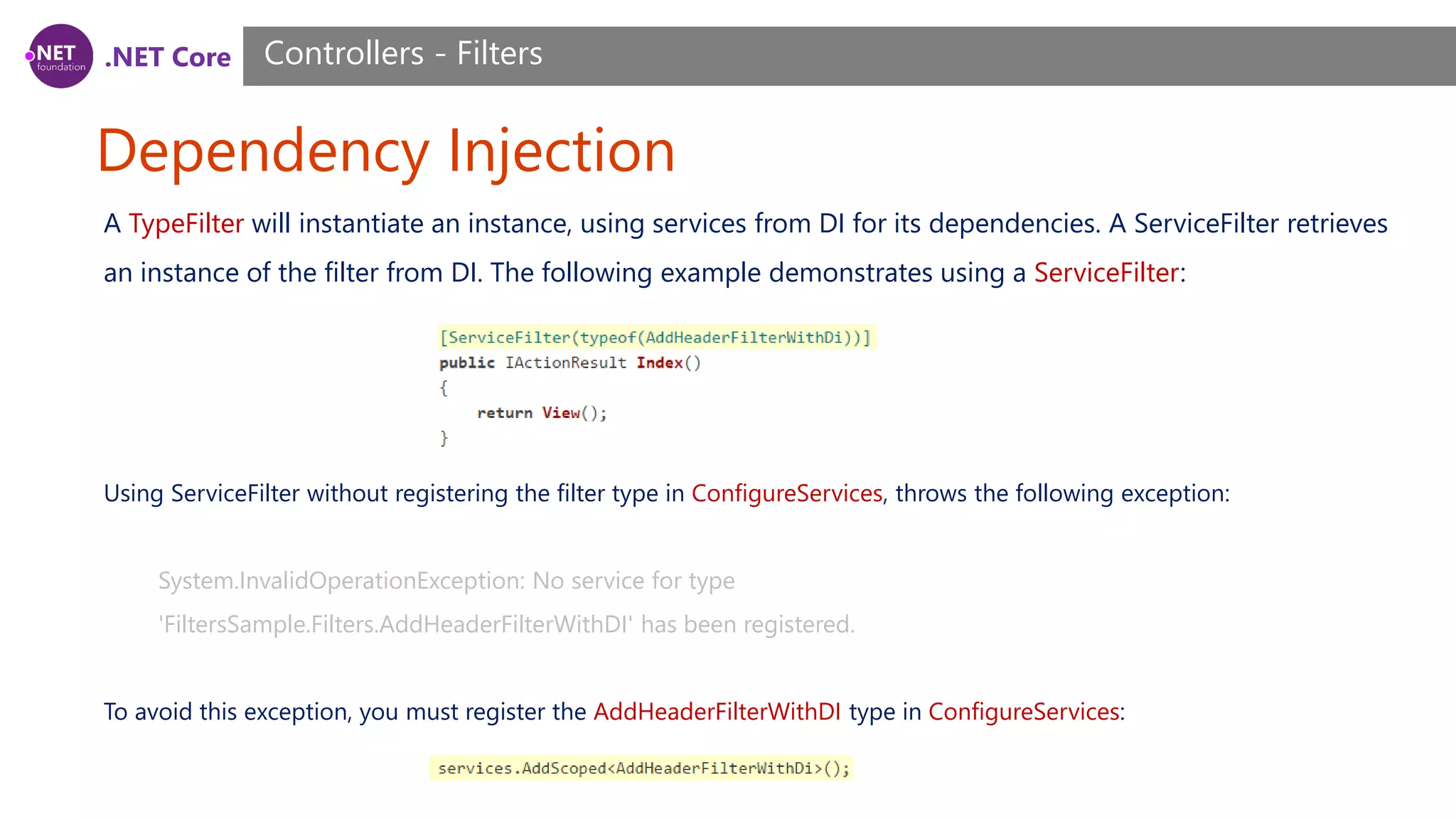

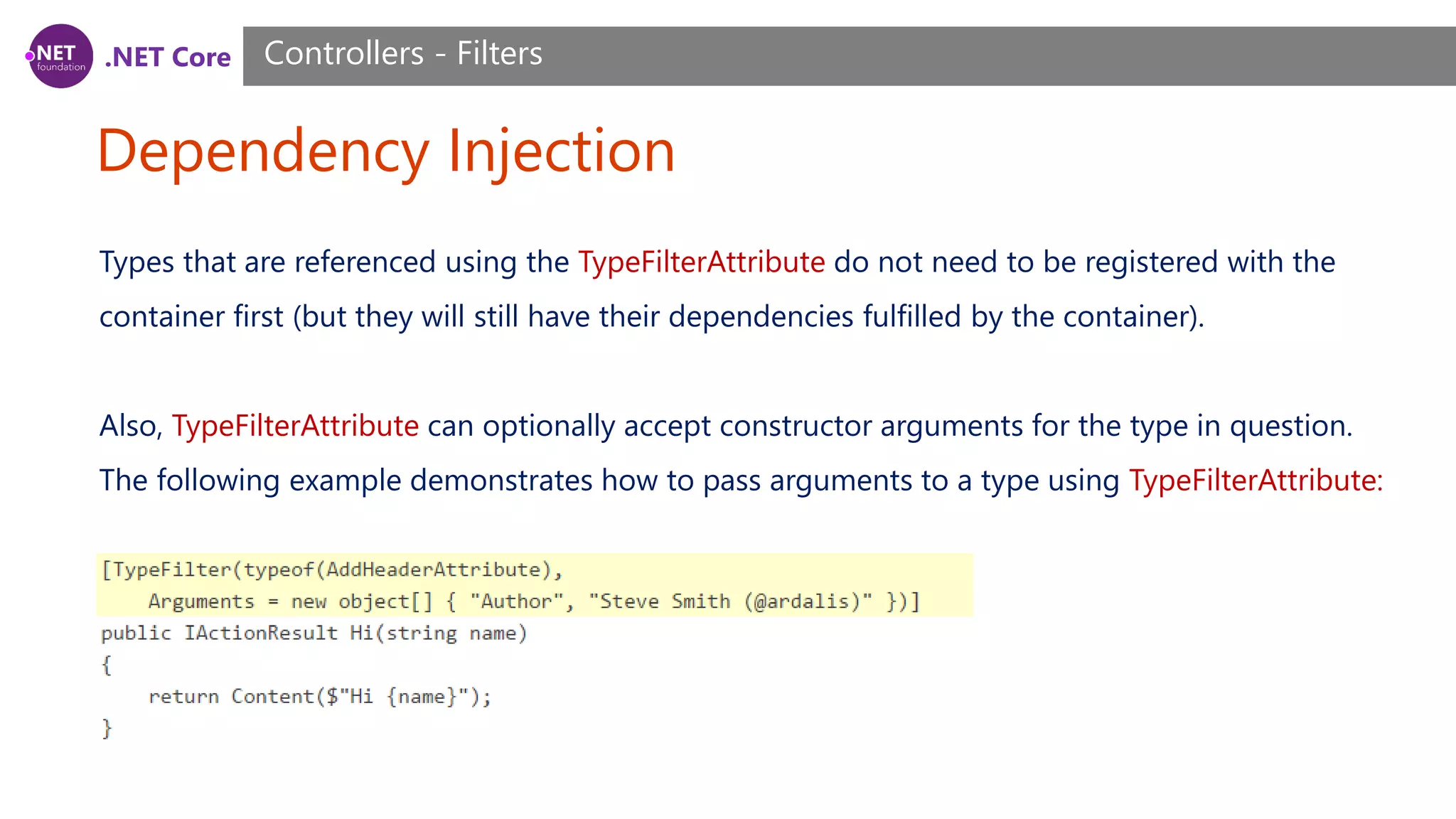
![.NET Core Dependency Injection Controllers - Filters If you have a simple filter that doesn’t require any arguments, but which has constructor dependencies that need to be filled by DI, you can inherit from TypeFilterAttribute, allowing you to use your own named attribute on classes and methods (instead of [TypeFilter(typeof(FilterType))]). This filter can be applied to classes or methods using the [SampleActionFilter] syntax, instead of having to use [TypeFilter] or [ServiceFilter].](https://image.slidesharecdn.com/session9-170907110411/75/NET-Core-ASP-NET-Core-Course-Session-9-26-2048.jpg)
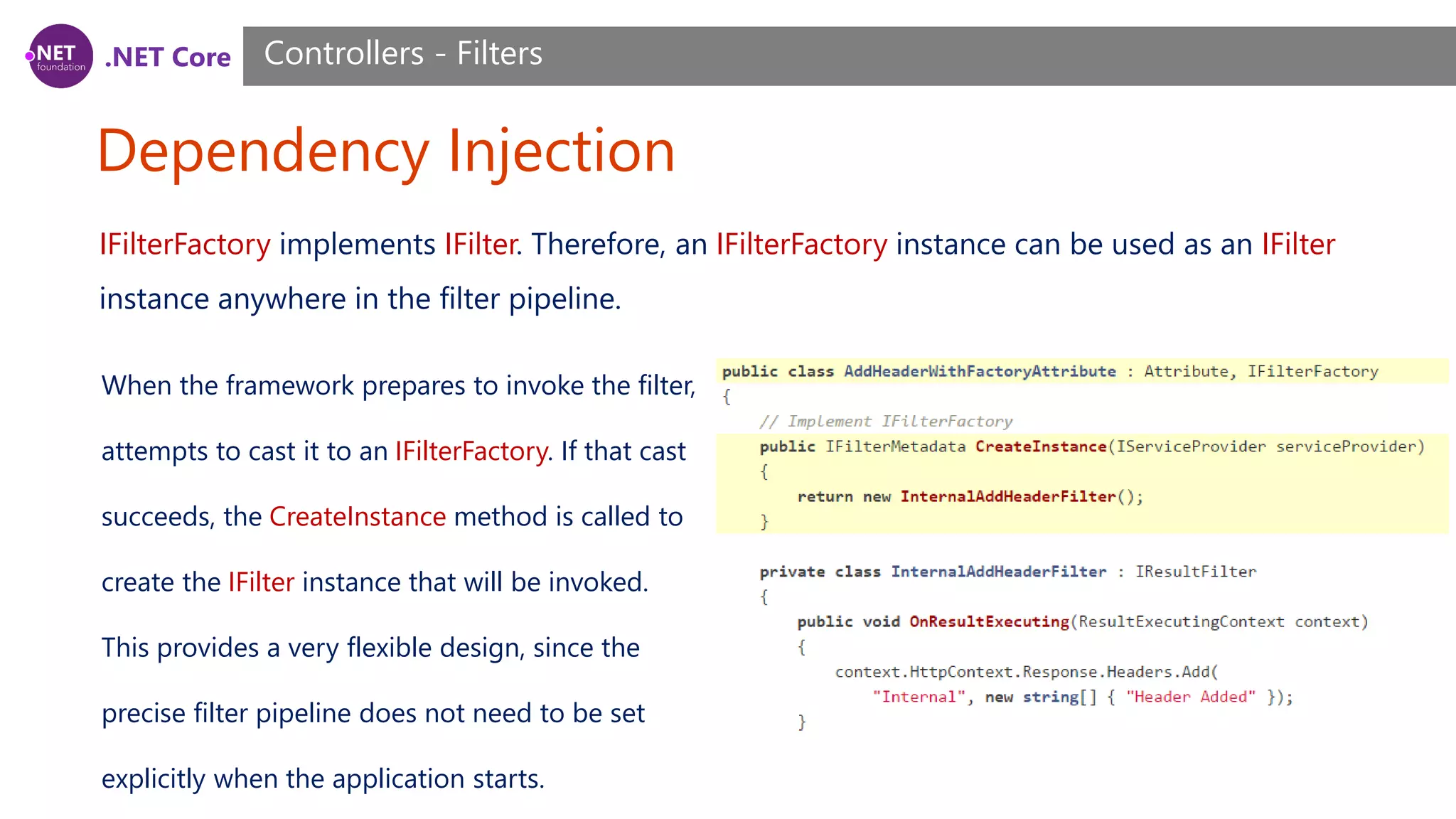
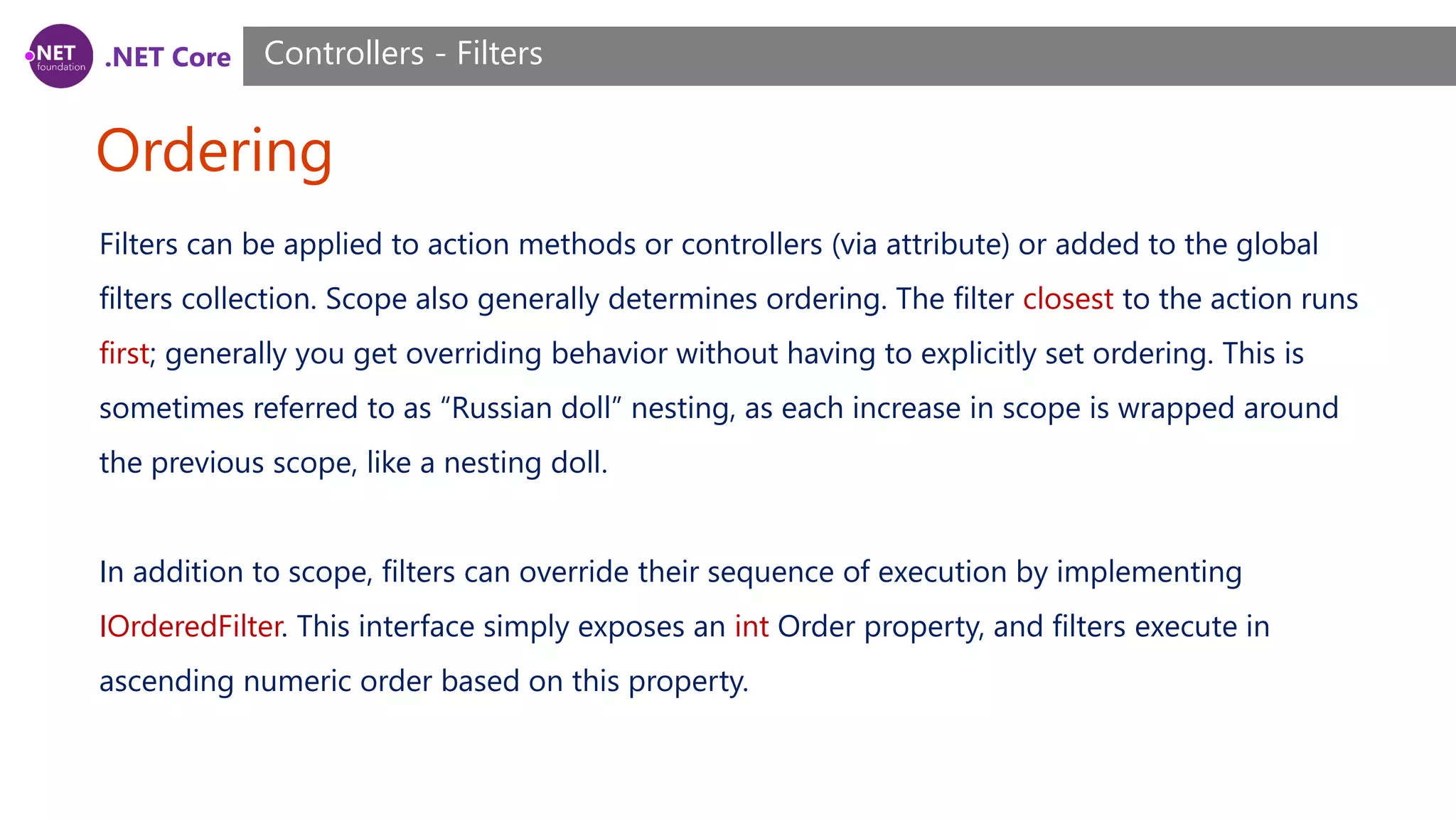
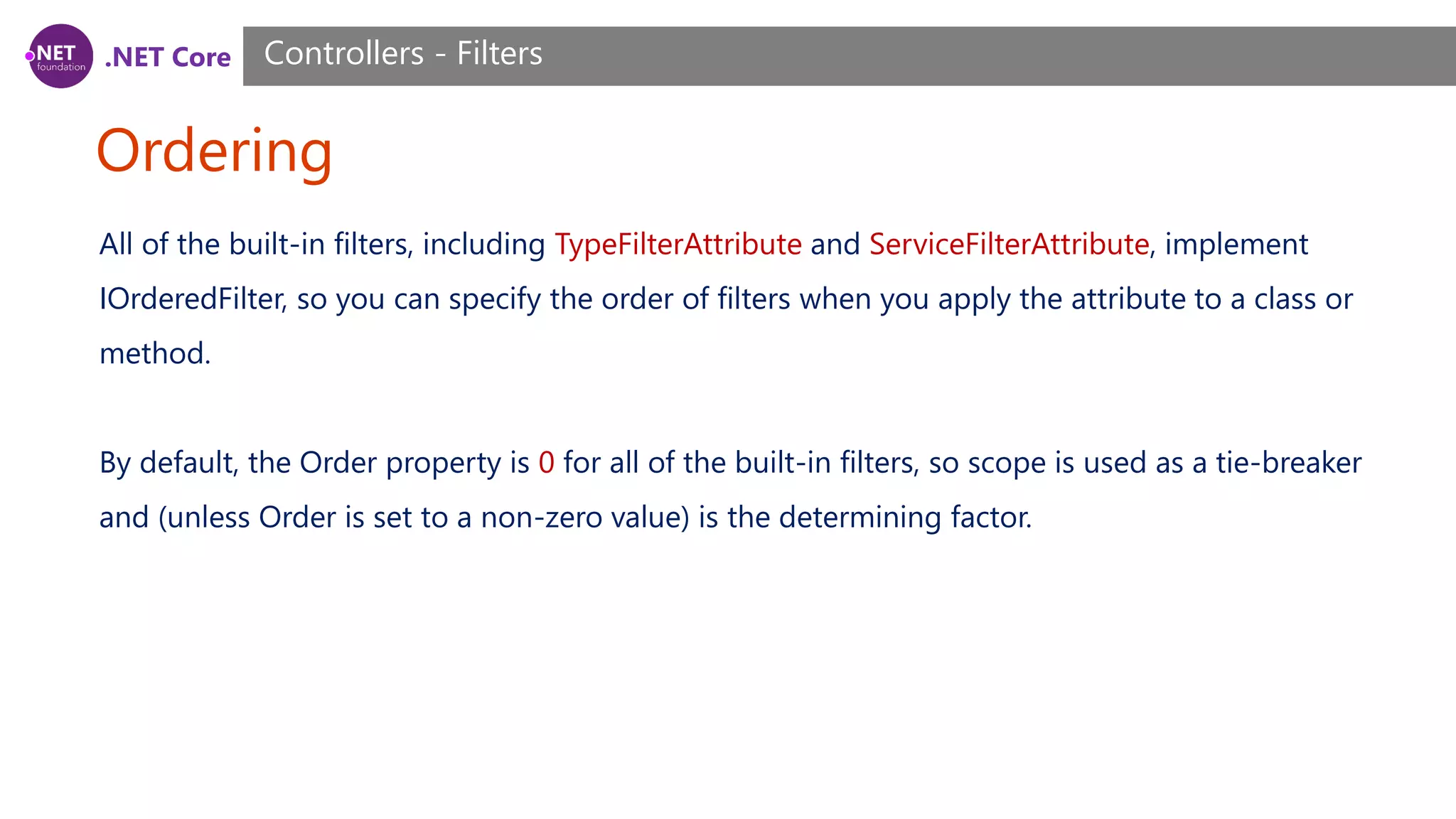

![.NET Core Ordering Controllers - Filters To modify the default, scope-based order, you could explicitly set the Order property of a class-level or method-level filter. For example, adding Order=-1 to a method level attribute: [MyFilter(Name = "Method Level Attribute", Order=-1)] In this case, a value of less than zero would ensure this filter ran before both the Global and Class level filters (assuming their Order property was not set). The new order would be: 1. The Controller OnActionExecuting 2. The Method filter OnActionExecuting 3. The Global filter OnActionExecuting 4. The Class filter OnActionExecuting 5. The Class filter OnActionExecuted 6. The Global filter OnActionExecuted 7. The Method filter OnActionExecuted 8. The Controller OnActionExecuted](https://image.slidesharecdn.com/session9-170907110411/75/NET-Core-ASP-NET-Core-Course-Session-9-31-2048.jpg)

